11.4 Harmonizing a Melody With Seventh Chords: Theory exercises
In addition to Workbook Chapter 11.4, see the example below.
Let’s look at an example to apply the guidelines outlined when harmonizing a melody using seventh chords. Since we covered using second inversion chords in the last chapter, we will not use second inversion chords in this progression in order to allow room to explore the different types seventh chords.

Listen to how the melody sounds. Think about melodic phrasing, cadences, and harmonic rhythm. When do you hear chord changes? When do you hear pauses and endings in the music?
Our first steps are to label the key, write in the scale degrees in the soprano voice, and write in the possible chord choices that could be used on each scale degree in the soprano. Because seventh chords have 4 chord members, there are 4 chord choices possible for each scale degree that will use the scale degree as the root, 3rd, 5th, or 7th of the chord. Use the method outlined in harmonizing a melody with root position chords and with first inversion chords to find and list all chord choices.
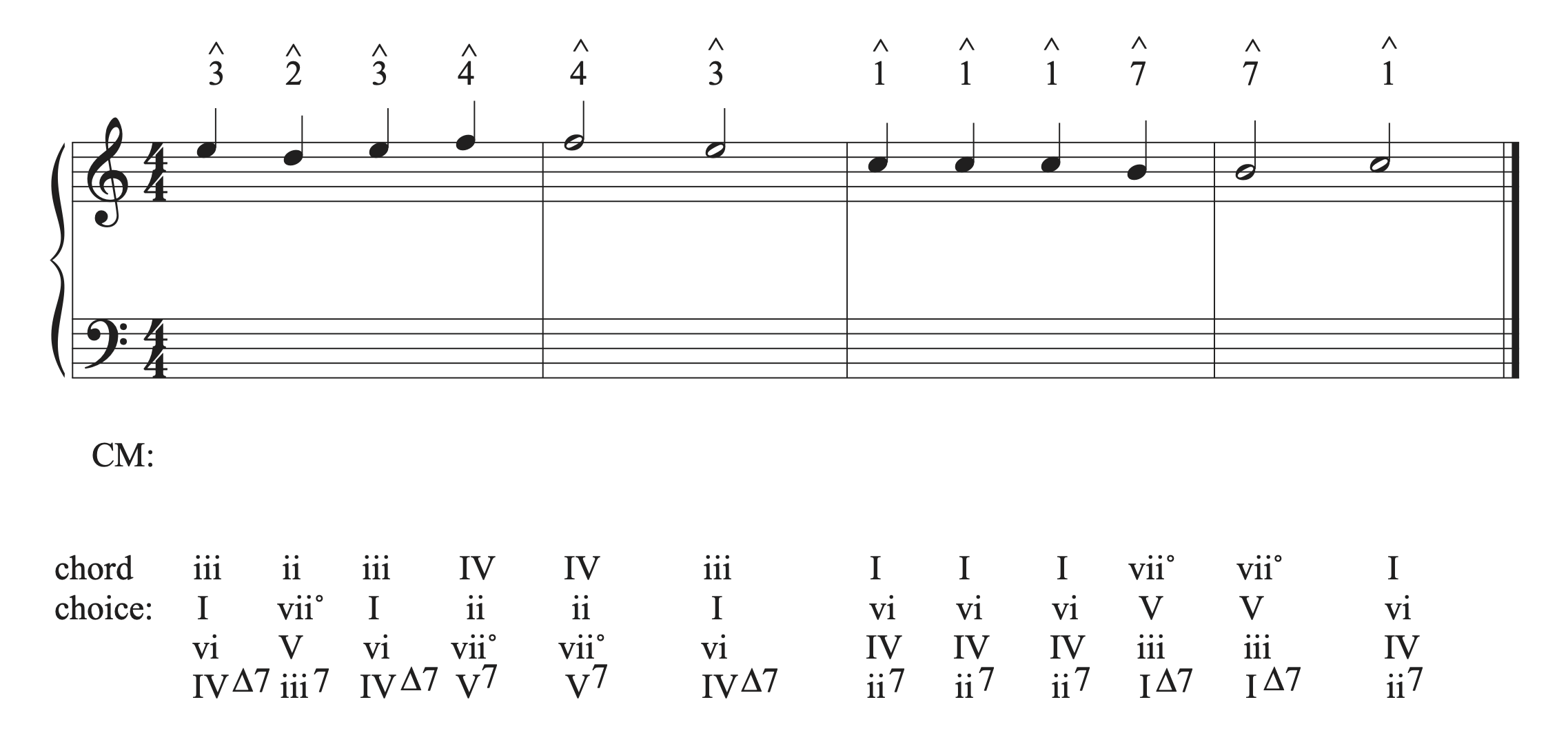
The next step is to eliminate any chords from the list that we can’t use. Determine the melodic structure, phrasing, cadences, and potential harmonic rhythm choices to help eliminate choices. Then, look at functional harmony to eliminate choices.
This example has a progressive cadence in bar 2 and a final cadence in bar 4. If we start from the end, we want V-I for our final cadence and can eliminate all other chords. Looking at the chord before last bar, we can eliminate the I∆7 chord because the chordal seventh is in the soprano and doesn’t move down by step to the next chord to resolve. We can also eliminate I∆7 because it does not function like a I chord, and is not commonly used. The iii chord can also be eliminated because it does not go to V. On beat 3 of bar 3, we can eliminate the vi chord because it does not move to V. On beat 1 of bar 3, we are starting a new part of the phrase. While any chord is possible after cadencing on tonic in bar 2, it is always clearer to start on tonic at the start of a phrase or section. Also, scale degree 1 repeats for 3 beats in bar 3, so we can establish tonic on beat 1 before using other chords to support scale degree 1 for the rest of the bar.
Looking at the cadence in bar 2, we can eliminate IV and ii on beat 1, which leaves vii˚ and V7 to move to I for a cadence. While we could use a deceptive cadence, we would have to use a V7 chord in order to use a V chord on beat 1 due to scale degree 4 in the soprano, and V7 is a strong chord that wants to move to I. It is best to use it in inversion within the phrase, especially to create a weaker cadence than the final cadence in bar 4.
Working from the beginning, we want to start on tonic, so can eliminate all other chord choices. The iii7 chord on beat 2 can be eliminated because the soprano note does not resolve down by step to the next pitch. We can also eliminate the ii chord because it does not move to any of the chords on beat 3. On beat 3, we can eliminate IV∆7 because the soprano motion doesn’t support the resolution of the chordal seventh. We can also eliminate the iii and vi chords because they can not come after the dominant chords on beat 2.
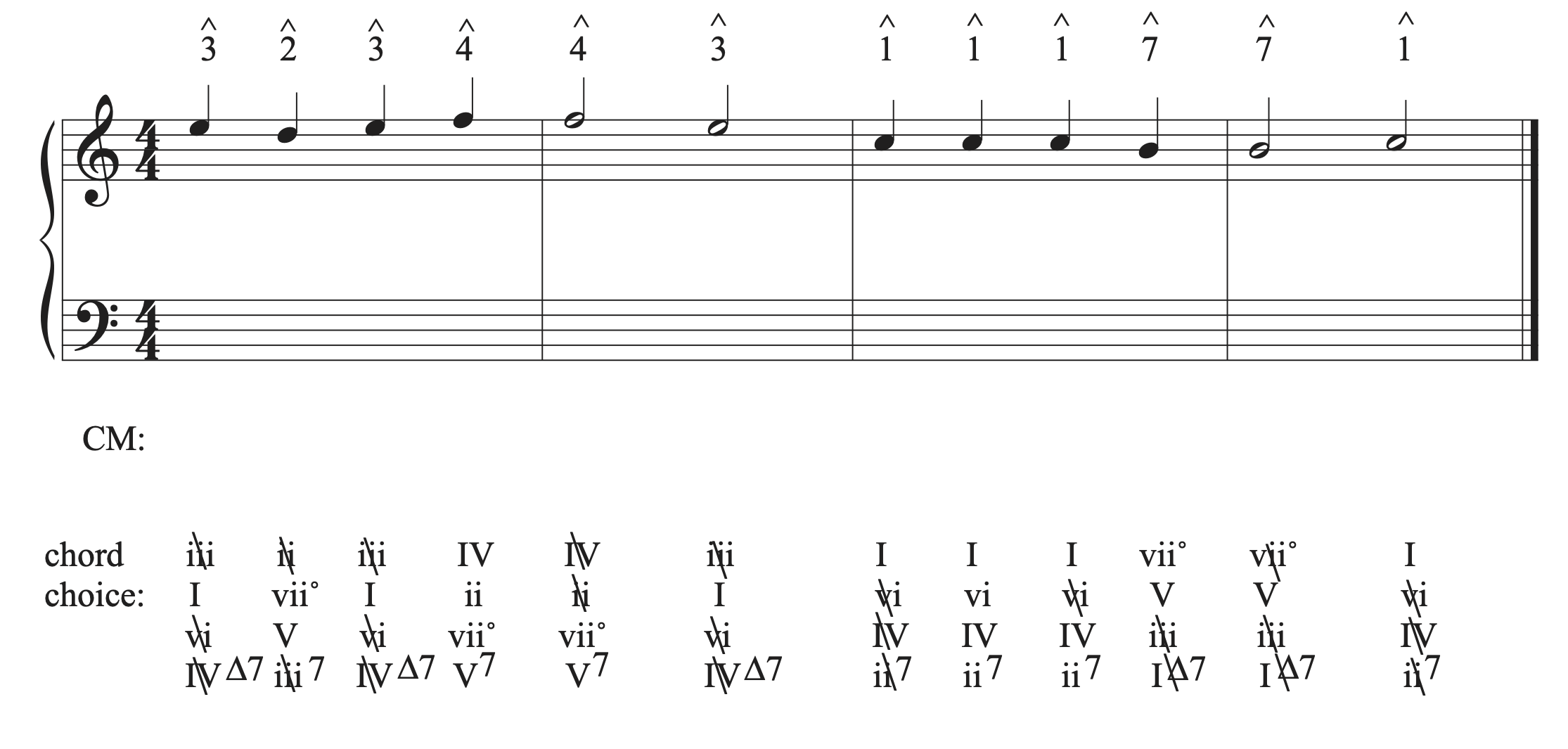
Next, we can choose a progression, looking for places to insert seventh chords and use first inversion chords to make the bass line smoother. We can choose I-V-I or I-vii˚-I for the first motion. We could potentially use seventh chords on V and vii˚ as well. However, we are just starting the piece and it’s a good idea to establish they key without using stronger chords so that we create forward motion. V is a stronger chord than vii˚, and we will probably see it often in this progression, so let’s use vii˚ for variety of sound as well as strength. We need to put it in inversion because it’s a diminished chord. To create an interesting bass line and create forward motion, we can use tonic in first inversion. Check the bass against the soprano to look for errors.

Next, we need to approach the cadence in bar 2. We could use a IV, ii, vii˚ (with or without sevenths) or V7 chord. We haven’t used a seventh chord yet in the phrase, so that would be a good option. The most common non-dominant seventh chord is ii7, but for variety, let’s use viiø7 so that we can see what the part writing would look like. We can use ii7 in the next phrase instead, which could help set up a stronger predominant-dominant-tonic motion towards the final cadence. We can use viiø7 in first inversion in order to create a stepwise bass line. Check the bass against the soprano to look for errors.
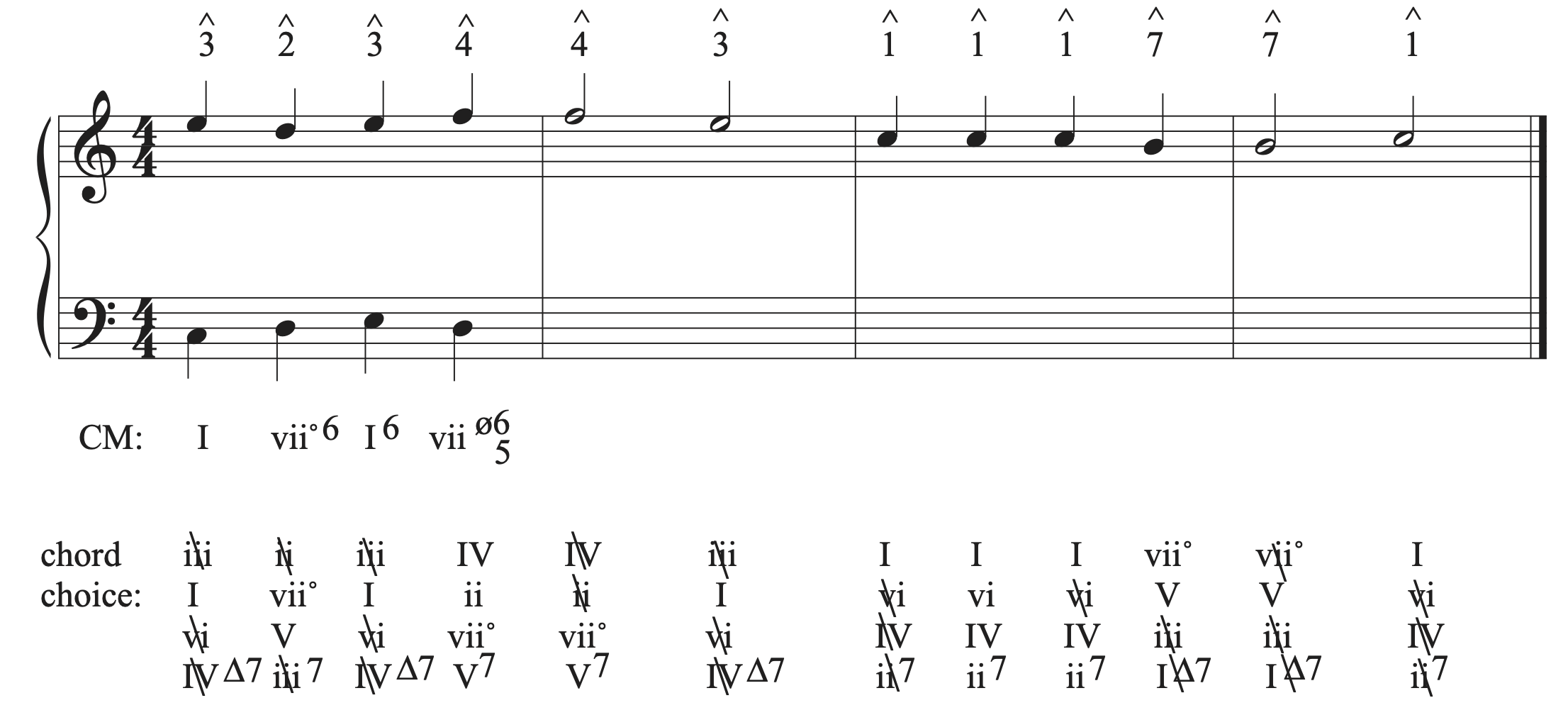
Next, we can cadence in b. 2. We’ve already used vii˚ as a triad and seventh chord, so let’s use V. Because the soprano is on scale degree 4, we can’t use a triad built on 5. We need scale degree 4 to be part of the chord, so we must use V7. V7 in root position is too strong to use for an internal cadence, so we need to put the chord in inversion. The viiø6/5 chord will connect nicely to V4/3 because they share 3 common tones. Then we can finish on I. Check the bass against the soprano to look for errors.
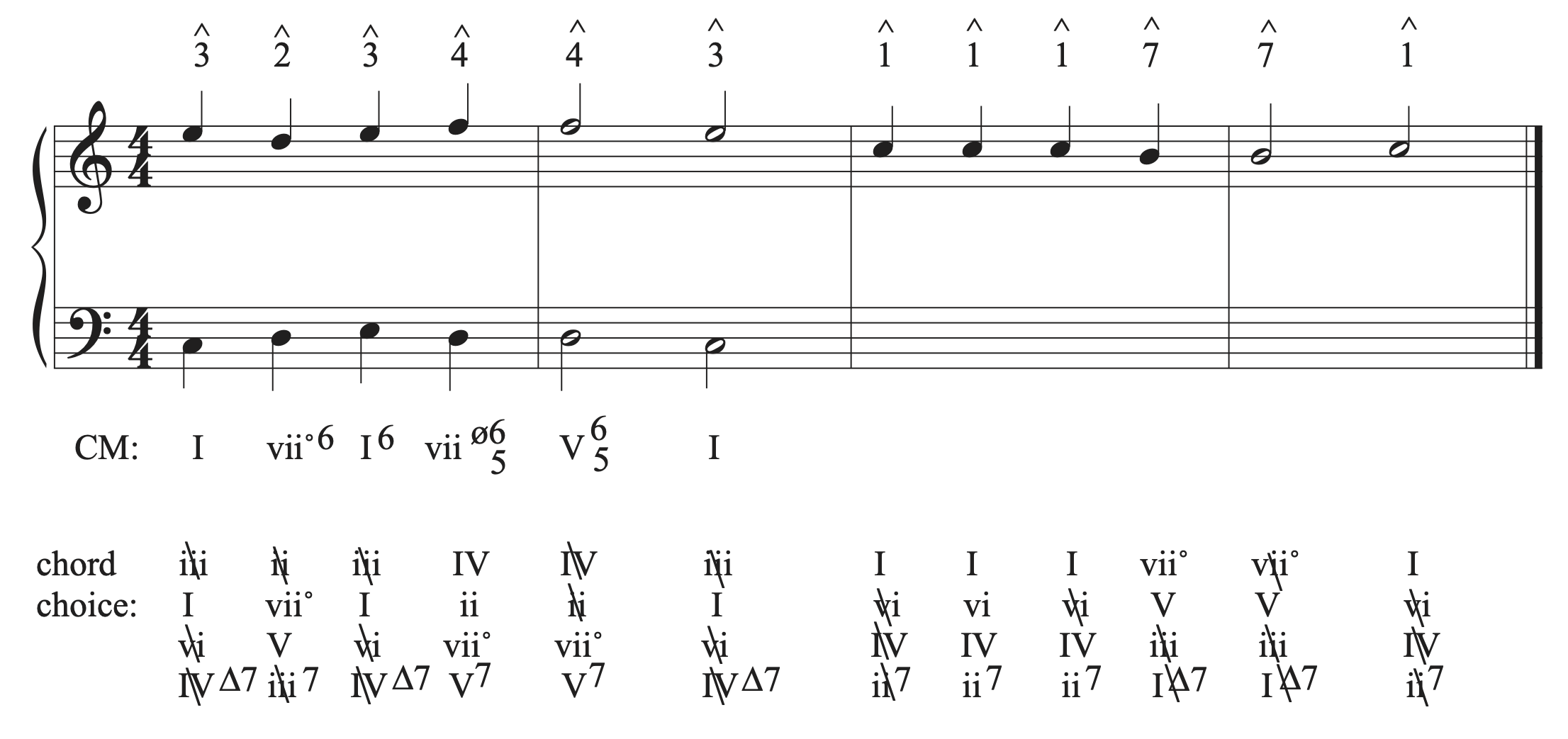
In bar 3, we will start on a I chord. The soprano then repeats scale degree 1 two more times. Looking at the chord choices, this would be a good time to add some variety to our progression and expanding the motion by using vi. If we start with I-vi, then we need to go to IV or ii. As mentioned, we saved the ii7 chord for use in this phrase to help strengthen the progression towards the cadence. This would be a great place to put it. If we use it in first inversion, it gives us the classic bass line motion using scale degrees 1-6-4-before going to 5. The ii6/5 chord needs to move to the dominant to resolve, so we can use V in root position to finish that classic bass line. The final cadence should be the strongest possible, so we can use V7-I in root position. Check the bass against the soprano to look for errors.
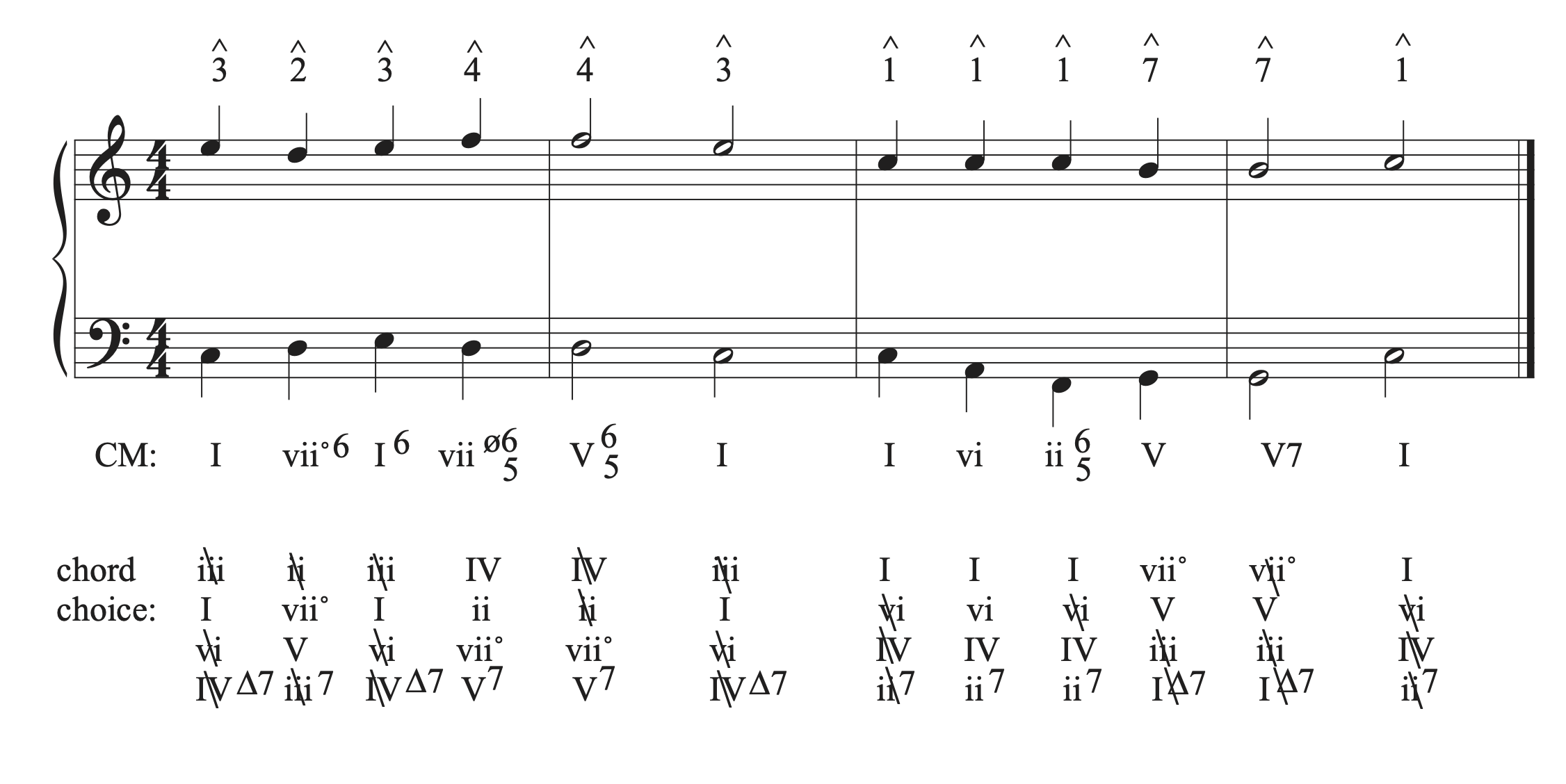
Now it’s time to part write. We can start at the beginning with I vii˚6 I6. Voice the I chord following part writing guidelines, the double the 3rd in the diminished chord. The I6 chord can double anything.
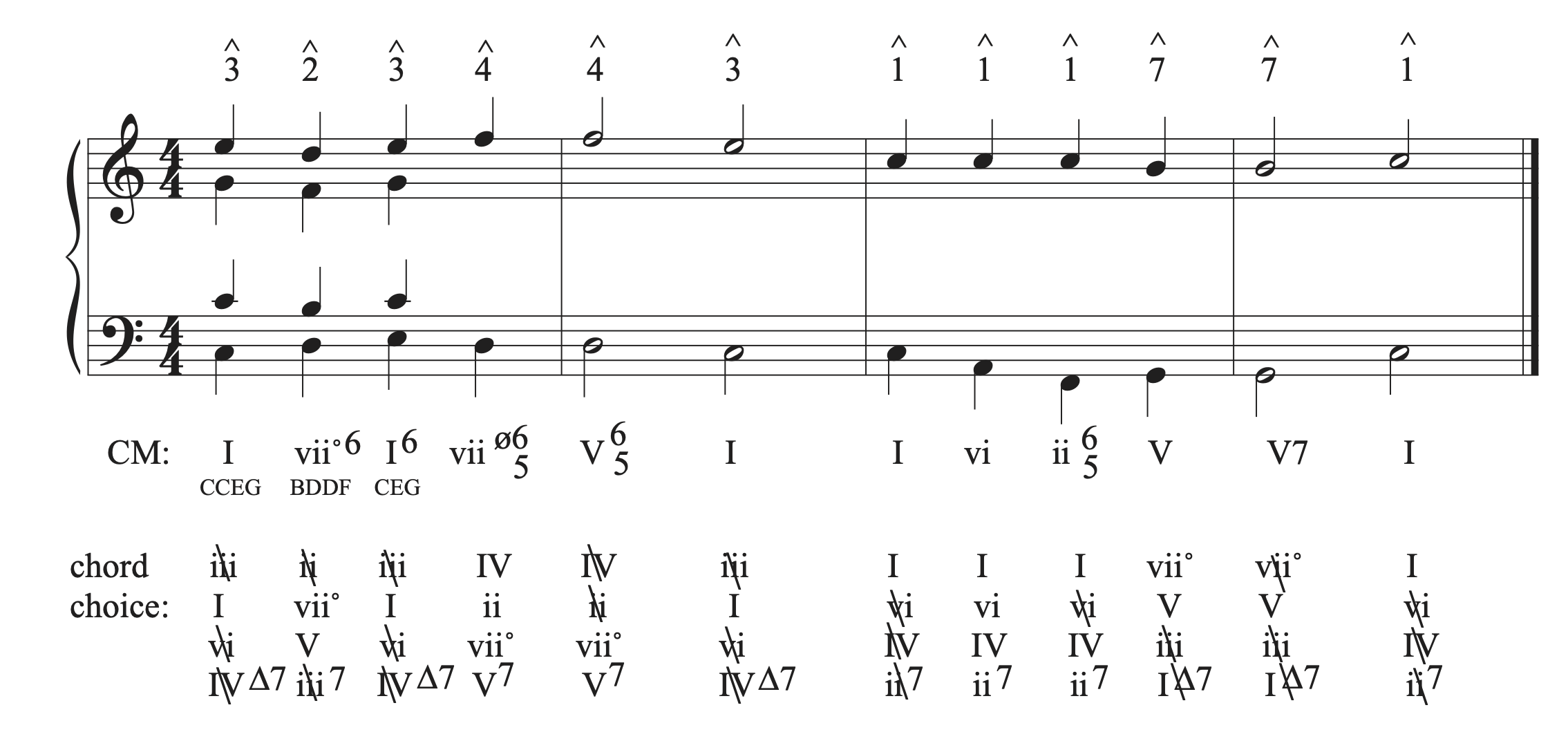
Next, let’s part write the viiø6/5 chord. The notes are BDFA. The chordal seventh, A, must be approached by common tone or stepwise motion from the I6 chord, so should come from the G in the alto voice. The remaining voice can move by step to the leading tone. To connect this chord to V4/3, the only note that moves is the A in the alto. It is the chordal seventh and resolves down to G in the V4/3 chord. The rest of the notes are common tones. In the move from V4/3 to I, it is important to move each scale degree in the precise way outlined in the guidelines for part writing with V7 chords in chapter 10.5. Put in the scale degrees on the V4/3 chord to help guide the resolution. Scale degree 5 remains on 5, 7 resolves to 1, 2 moves to 1, and the chordal 7th, 4, resolves down to 3 to complete the I chord.

Bar 3 begins on a re-voiced I chord, then moves smoothly to vi. When part writing the ii6/5 chord, make sure to place the chordal seventh first so that it is approached by common tone or stepwise motion from the chord before. The chordal seventh, C, is the in the soprano and is resolved down by step when the soprano moves to the V chord. Part write the remaining three voices using common tones and stepwise motion. Then voice the V chord, doubling the root of the chord and using common tones and stepwise motion.
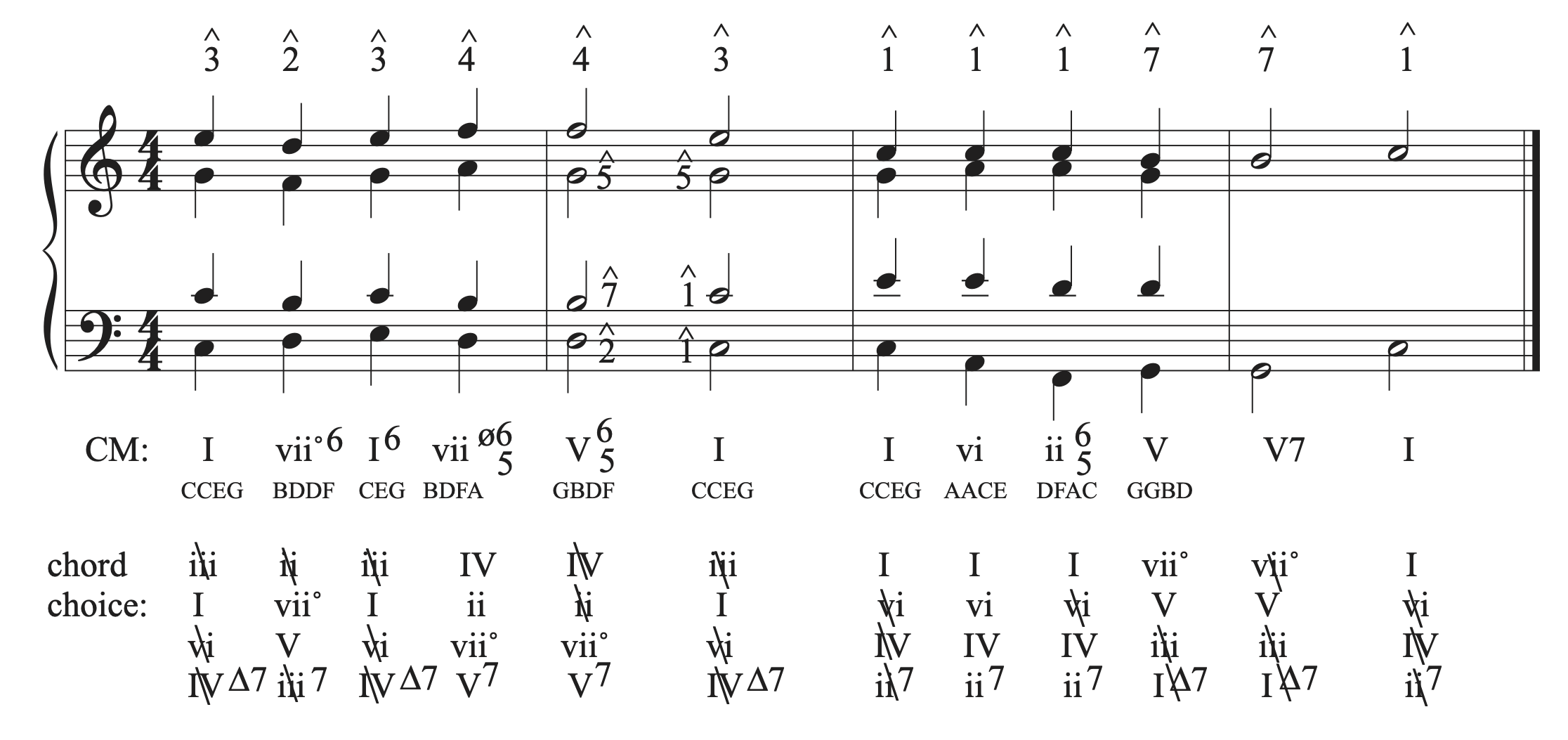
The final cadence uses a root position V7 to root position I chord. The chordal seventh, F, must come from the G in the chord before. All of the other notes are common tones. When part writing from V7 to I, put in the scale degrees on all notes and move each scale degree in the precise way outlined in the guidelines for part writing with V7 chords in chapter 10.5 Scale degree 5 in the bass moves to 1. Scale degree 2 moves to 1, the chordal 7th resolves down from 4 to 3, and 7 resolves to 1. Note that the I chord is incomplete. In order to have both chords complete, the leading tone would have to resolve down to 5, and it can only do that in an inner voice. In this example, it is in the soprano, so must resolve up to 1, creating a I chord without its 5th.
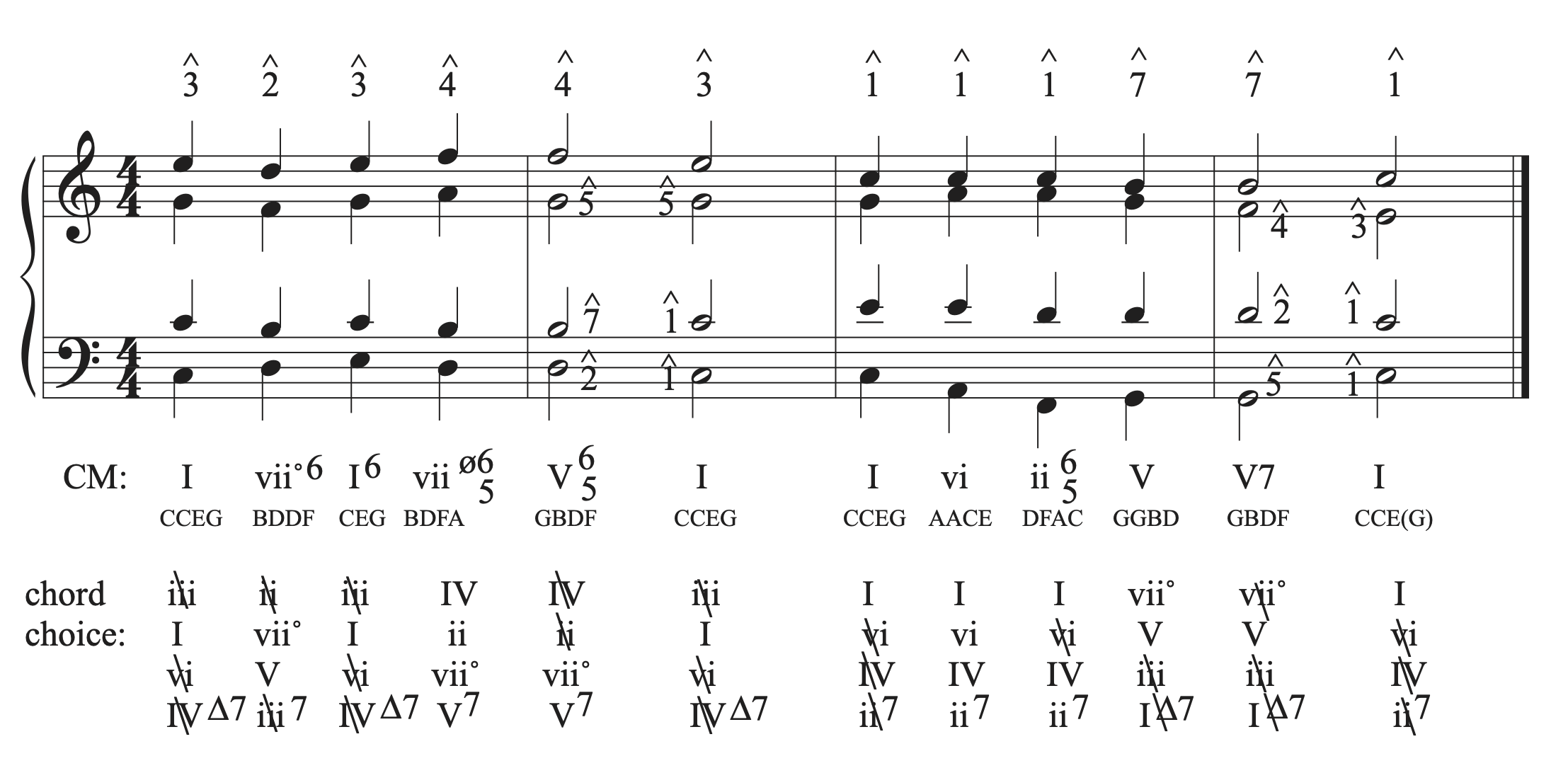
Listen to the full progression:

